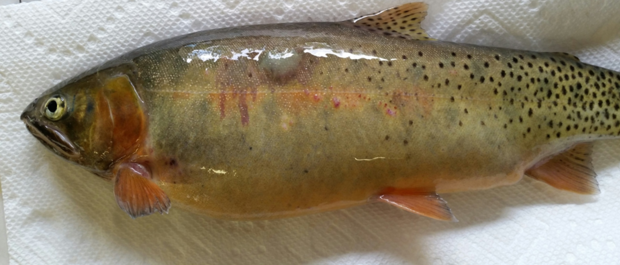CPW, CSU Researchers Investigate Resurgence Of Trout Kidney Disease
(CBS4) -- A bacteria responsible for often-fatal kidney disease went absent from the state's trout populations for 18 years, but recently resurfaced and required the culling of an entire hatchery's supply of fish.
The outbreak at the Glenwood Springs State Fish Hatchery in 2015 resulted in the loss of 675,000 cutthroat trout. The loss, an estimated value of $2.1 million, impacted the state's ability to stock cutthroat for several years, according to Colorado Parks and Wildlife.
State officials responded to the event with state-wide testing of both captive and natural habitats. Low levels of the bacteria, Renibacterium salmoninarum, were discovered in four state hatcheries, one federal hatchery, and most of Colorado's waterways. And its prevalence appears to be increasing throughout the western U.S.
CPW researchers have teamed up with those from Colorado State University's Fish and Wildlife Research Unit in hopes of improving testing, treatment, and management of the problem.
"Understanding how the bacteria that causes BKD (bacterial kidney disease) is transmitted from fish to fish or fish to egg to fish, is important to figuring out how to minimize the spread of the bacteria and the disease among hatchery and wild fish populations," said CSU Ph.D student Tawni Riepe, one of the point-persons of the research effort.
To date, Riepe's work has proven the transmission of the disease flows more so from parent fish to their eggs and offspring, less successfully from adult fish to adult fish.
Other focuses of the research include testing that determines the intensity of infection in fish, the DNA of the pathogen, non-lethal detection techniques, and which antibiotics the hatchery fish respond to.
"Tawni's work with R. salmoninarum represents some of the most comprehensive research conducted in inland trout populations and will not only benefit the State's wild and hatchery-reared cutthroat trout populations and the anglers of Colorado, but also further contribute to our knowledge of bacterial kidney disease in the United States and worldwide," said Dr. Eric Fetherman, an Aquatic Research Scientist from CPW who is working with Riepe.
RELATED Air-Drop Fish Stocking Operations Bring Trout To Colorado Alpine Lakes
Dr. Dana Winkelman of CSU's research unit is also on board.
At this point, studies show that brook trout appear to be more susceptible that other species.
"There is no risk to anglers from fish carrying that bacteria," explained CPW Aquatic Research Scientist Dan Kowalski, "it does not infect humans and poses no risk when eating fish."
RELATED Reel It In: Colorado Anglers Asked To Give Trout A Break During Hottest Part Of Day
Reducing the amount of the bacteria being brought to the natural habitats by stocked fish appears to be a successful tact, Kowalski said.
So does reducing stress on fish.
"Bacterial kidney disease usually shows up only when fish are stressed from spawning and it can be aggravated with environmental stresses like warm water temperatures or low flows," he said.






